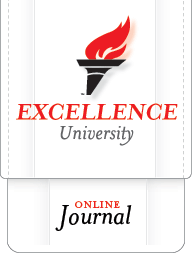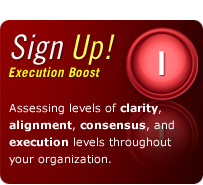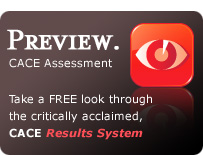How to Build a Strong Consulting / Speaking / Seminar Business
by John Spence
June 29th, 2006
- First you will need to get a VERY clear idea of exactly what you are trying to achieve. What, specifically do you want to do with your speaking / training business? What will you offer; keynotes, workshops, one-day seminars, multi-day seminars? Do you want to talk only to CEOs – or are you trying to get to the level of speaking to crowds as large as 5,000 or more? How many clients do you want, what sort of clients, how much travel are you willing to do, to where, how much revenue do you honestly want to generate, how much time do you want to work each week, what price are you willing to pay to succeed? You cannot be all things to all people; you need a laser-like focus on where you know you can hit home runs. You also have to decide what you really want, so you know what to say “No” to. You can get a lot of input about these questions from key folks around you that you respect and trust, but at some point you MUST put a stake in the ground and fully commit to a focused course of action. I would also add that the only way you will ever be truly successful is if you LOVE what you do. So it is a combination of picking something you really love and is fun for you, that you can do very well, that is also a topic that is highly valued in the market place. If you do not have ALL three of those, you will not be able to build a strong business.
- Once you have a good handle on what you want to be, you MUST put forth a Herculean effort to become as close to an expert on that subject or subjects as is possible. Let me use myself as an example. I have always been interested in business and leadership and read broadly on those topics — but when I decided that I was going to try to get paid to talk about and give advice on those subjects, I made a personal commitment to become as knowledgeable as possible on them. Since 1994 I have read a dead minimum of 100 business books every year — most years closer to 150; so that is about 12 books every month. I have also listened to at least 20 or 30 business/leadership/strategy CDs and tapes every year (I went through 230 business books on tape in a 2-year time span when I was commuting 4 hours a day); so another 2 or 3 books on CD every month. I read close to 10 magazines every month: Fortune, Forbes, Inc, Fast Company, HBR, Fortune Small Business, Business 2.0, Consulting, and Florida Trend… plus a few others I pick up at airports like The Economist, Wired, and Entrepreneur. I read a local paper from the town I am in every day and usually read the Wall Street Journal about 3 days a week. I typically get 3 to 5 white papers and research reports every month and also spend several hours each month searching for specific info on the web. Yes. I do that EVERY month and have for the past 11 years… without fail. If you add it up, it is roughly about 50,000+ pages a year specifically on leadership, business strategy, high-performance teams; the most important topics my clients are interested in, the things I get paid to talk about and things I am also very interested in. Next, I attend 2 or 3 business seminars a year – typically multi-day events and very expensive, but I see them as an investment in my business. In addition, I also continue to work on dozens of REAL business projects for my clients, many of them in the billion-dollar range. And finally, I have served as CEO for two international companies. That equals a ton of high-level business experience and more than a half a million pages of reading over the last decade… so I can get $6,000 to stand up and talk for an hour. If you are not willing to do this level of work; no one will be willing to pay that much to listen to you!
- You’ll need to develop a very, very clear set of values and key strategies that will drive your business. For example, for my firm it is: Great work, awesome customer service, superb communication and dedication to personal excellence; all focused on companies of 10-300 million that specifically need the sort of services we offer.That is what we think about every day; it is on our minds all the time. How can we live those values, find those customers, meet them and work for them and blow them away with superb work and world-class customer service? The key to success is a combination of a clearly targeted message / product put in front of lots of the “right people.” This also means that it is essential for you to create a very detailed “Target Customer Profile” of the absolute best potential clients and then work like crazy to build a good, clean database of potential clients that meet those criteria. You might have to buy some mailing / e-mail lists, or advertise in the specific journals or magazines these target people read. But here is the essence — powerfully targeted message put in front of lots of the right people – then track those people carefully and keep in contact with them.
***A note – we have clearly figured out who is the most likely to want/need/afford our services—and we focus all our energy on ONLY them. We try hard not to waste a lot of time with people who do not meet these “key client criteria”— they are usually just a pain to deal with, will complain about everything (especially price), and no matter what we do we won’t be able to make them happy. It is just bad all the way around. So, just as important as deciding who your target clients are – is learning who to say NO to as well. - You will need to get even more clear about exactly WHAT you sell and make it super easy for those key target people to understand specifically what they are buying, what they can expect as results and how much it costs. You have to take all of the guess-work out of it; make it easy for them to make a buying decision. People will not spend money on what they do not understand and it is often very hard for people to get a feel for what we really do when we sell them speeches, consulting or training and those are pretty amorphous products. Remember, there are a lot of people out there that claim to be trainers / consultants / speakers and they are terrible. They have done none of the homework, do not have the relevant experience and are not committed to delivering excellence; they just want attention and money. These speaker “wanna-be’s” have totally burned our potential clients, so we already have a tremendous hurdle to jump over right out of the starting blocks. Keep in mind that the biggest block to making a buying decision about our sort of products is FUD (Fear, Uncertainty, and Doubt) == so it is your responsibility to remove as much FUD as possible or people will not trust you enough to invest in your programs. You have to create specific “products” with clear deliverables and outcomes so they know precisely what they are giving you money to accomplish.
- After you figure out all of the above, then you have to be an evangelist for your company and programs. Not pushy, never overbearing, and absolutely not a pest; but a very professional and polished marketer of your service to anyone and everyone that meet your criteria. Know what you sell; know who is most likely to want it/ need it / pay for it and then spend every waking moment getting in front of those folks and helping them get excited about how you can honestly help them. You’ll need to scan the papers, local and regional magazines and the internet for possible leads. Send out highly customized and extremely well-written letters. Make dozens of calls and send hundreds of emails. All focused on telling a compelling and honest story of how you can add real, significant value to your clients. You have to clearly show them how you can solve pressing problems that they desperately want to have go away or help them achieve great things they have always wanted to achieve. By the way, the close ratio is typically ONE new client for every 100 or so contacts. 10 new clients = 1,000 very well orchestrated, professionally carried out personal contacts (letter, call, meeting, email). Yes, that is a lot of work for the first three years or so.
- As part of that you will also need a HUGE network of people that can recommend you – send you referrals – give you leads. Obviously your current /past customers are the very best for this (the client I delivered a class for yesterday sent me an email this AM — I got some of the highest scores ever for the groups I presented to – they want to hire me for a number of additional days next year — and have already offered to pass my name on to several of their vendors and associations — that is exactly how it works). Also—you’ll need a bunch of “hubs” that can help you. Hubs are people who – by the nature of who they are and what they do – come into contact with lots and lots of your key target customers. Get a hub on your side and they can tell 400 people about how great you are – where as a regular person who loves what you do – will tell about 5 people (nice, but not enough to help you build your business). Also, there is simply no way only 2 or 3 hubs will send enough work your way – you need a small army of key folks waiving your banner (I have several agents, quite a few key hubs and dozens of clients that all send one or two folks my way each year—individually not much—combined — 70+ solid and qualified leads a year—more than enough).
- Another key factor is that people need to meet you and watch you present in order to trust you and want to hire you. That means for the next year or two you need to get out and do as many presentations as humanly possible. Rotary, Kiwanis, Chamber, business clubs, networking clubs, volunteering to help a non-profit… any organization that will let you put on a program (in front of the right people). You may have to do a lot of these for free or for very little money (I probably did 50 free seminars in my first year) — but the more exposure and practice you get —- the more work you will eventually get. With what we sell – a big part of the decision rests on whether people like and trust you – and many cannot make that leap until the meet you and see you present – so make it easy for them to see you deliver a superior speech or program – and they will want to hire you right away.
- Lastly – when you do land a client—you have to simply dazzle, delight, enthrall and surprise them by delivering a level of excellence they had not imagined was possible (in every aspect of the program: pre-meeting coordination, responsiveness, flexibility, delivery style and professionalism, workbooks, workshops, PowerPoint slides, customization, tools, resources, research, stories, examples, facilitation, follow-up, and “thank you’s” — it ALL has to be amazing.) Then keep in close contact with them, become a real friend and trusted advisor —and nurture the relationship for years and years. I am still in contact and on very good terms with people I did work for in 1989 (wow — 15 years flew by). I talk to them 2 or 3 times a year, send them a note from time-to-time or an article — and then out of the blue I will get a call to ask for help or to introduce me to a potential client. As a perfect example: both of my current major current clients came from referrals from a business friend I have known since 1990 – we have not actually worked on a project together since 1994 – but here in 2005 he has helped us land our top two clients that represent 60% of our business!!!! Your loyal customers will build, grow and sustain your firm for the long run – I promise it.
The hard part is that no one else can do these things for you. People can help, suggest, guide and mentor (like me). You can read books on sales, networking, referrals, marketing (a very good idea). But in order to sell your programs and speeches – it MUST be you out on the street, in meetings, at seminars, sending letters, making phone calls, writing emails — building relationships and helping people see and become excited about what you offer. Excited enough that they are willing to write you a check for $5,000 to $50,000 for you to come in and help their team. A lot of consultants, speakers and trainers know this is the way to build their business — but VERY few are willing to do the hard work to get it done.
A final little thought: I get dozens of speakers / trainers asking me all the time, “How do you get so many engagements every year – and all at such good rates?” The answer I give them is straightforward: do NOT worry at all about selling programs. Worry your ass off about being the best presenter you possibly can be. Worry yourself to death about always delivering maximum value to the client. Drive yourself crazy worrying about being incredibly well prepared and totally focused for every presentation. Have a nervous breakdown worrying that your work is so good that the client will be overjoyed they hired you. Worry about all that stuff – and you will never, ever have to worry about being busy. Your clients will keep you booked for months in advance – at whatever reasonable price you want to request. Be fantastic in the information and presentation and the rest will take care of itself. That is honestly the secret!!!
Well, you asked me — so there is pretty much what I am thinking… and I want to say that I feel VERY comfortable with this information – because it is EXACTLY what I had to do myself for 5 years to get my business in a position… to finally get where it is now… almost 10 years later!!!!!
Hope this helps— love, John
For more than a decade John Spence has been traveling worldwide delivering speeches, executive training sessions and business improvement seminars. In an average year John travels upwards of 200 days and presents more than 150 programs. He has won a number of awards for his public speaking skills and counts firms like Pepsi, Merrill Lynch, GE and IBM as clients. For more information about John and his programs go to: www.johnspence.com
Article Filed under: I. WATER (Team/Group Excellence)



1 Comment Add your own
1. Brian Higley | September 13th, 2006 at 2:46 am
Good stuff John! I was most struck by the following note: ***A note – we have clearly figured out who is the most likely to want/need/afford our services—and we focus all our energy on ONLY them. We try hard not to waste a lot of time with people who do not meet these “key client criteria”— they are usually just a pain to deal with, will complain about everything (especially price), and no matter what we do we won’t be able to make them happy. It is just bad all the way around. So, just as important as deciding who your target clients are – is learning who to say NO to as well.
What are some SMART goals for how to achieve this objective? What EXACTLY did you do to get this done?
Trackback this post | Subscribe to comments RSS Feed
Leave a Comment
Some HTML allowed:
<a href="" title=""> <abbr title=""> <acronym title=""> <b> <blockquote cite=""> <cite> <code> <del datetime=""> <em> <i> <q cite=""> <s> <strike> <strong>